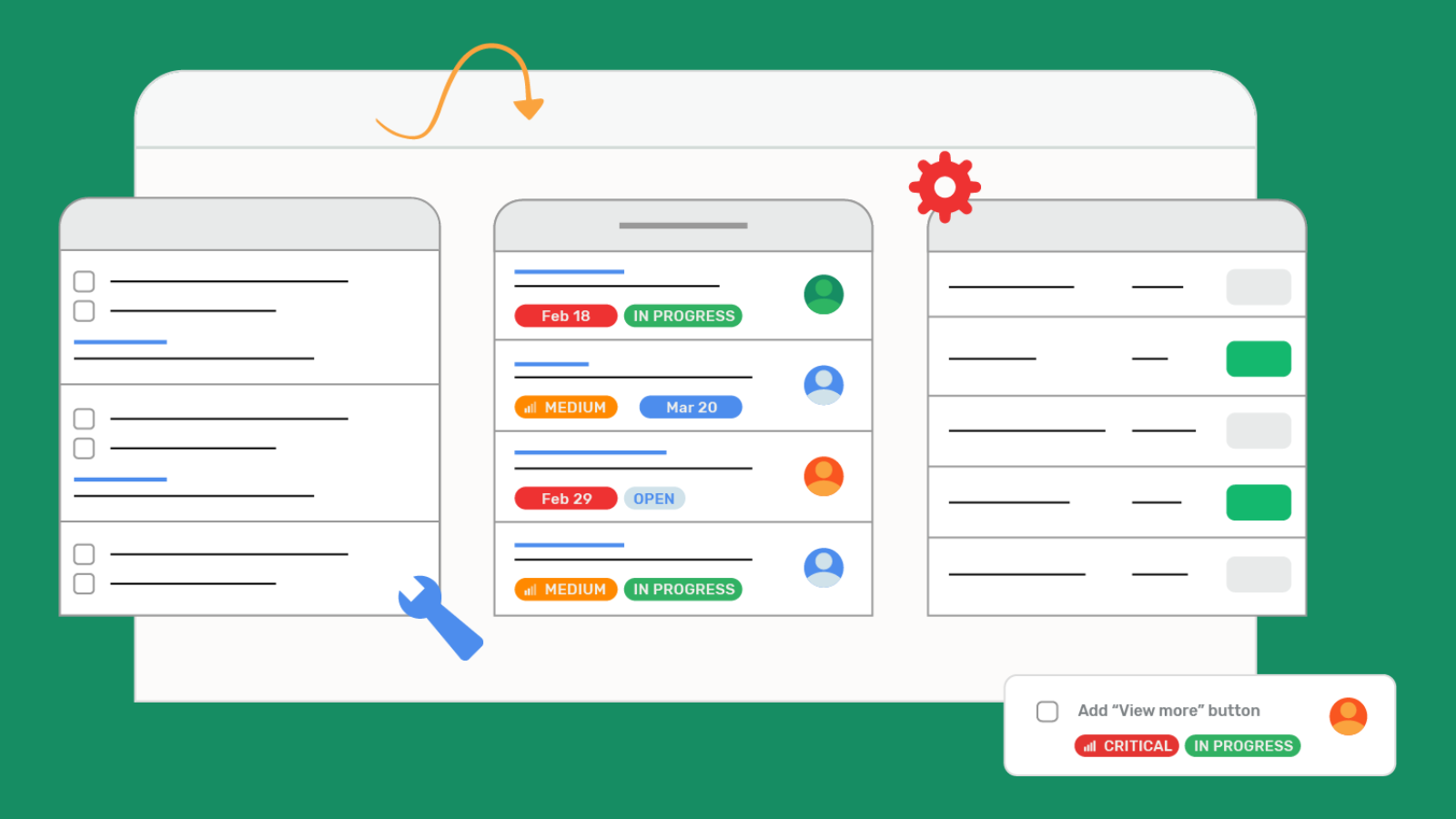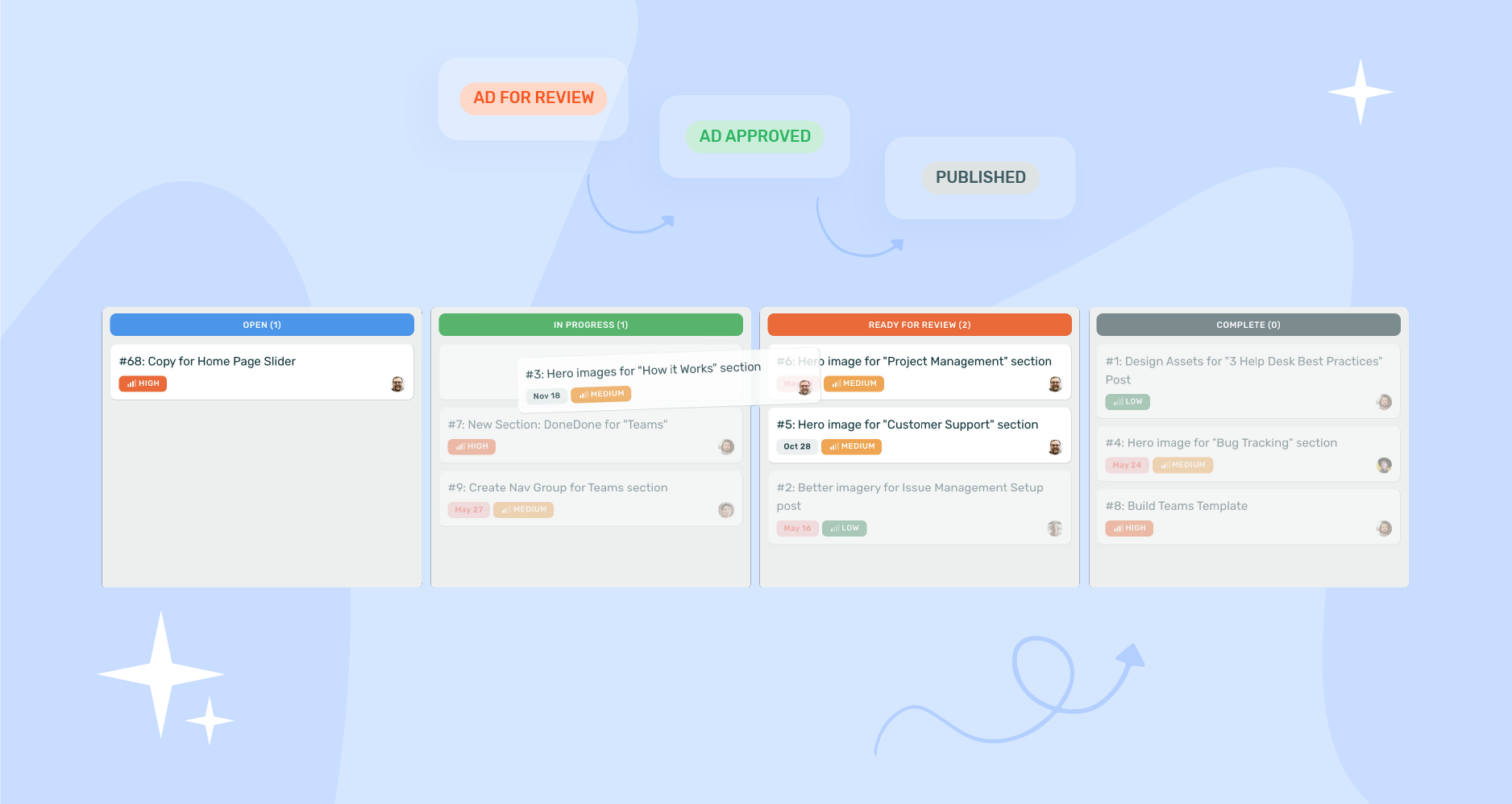In today’s fast-paced business environment, project management has become more crucial than ever. But with so many moving parts, how can you ensure that your projects stay on track and within budget? Enter the world of project tracking with a simple project tracker like DoneDone, specifically designed to streamline your project management process and help you achieve stellar results. Dive into this ultimate guide to discover the secrets behind successful project tracking and unlock your team’s full potential.
Key Takeaways
- Project tracking is an essential part of project management involving monitoring progress, recognizing issues and staying on schedule.
- Project tracking tools are invaluable for managing large projects that involve multiple teams, as they can help assign tasks and prioritize them to ensure the project is completed on time.
- Successful project tracking requires real-time monitoring, visual tools such like Kanban boards, task & file management plus project and task reporting.
Understanding Project Tracking

Project tracking is a vital aspect of project management, involving monitoring progress, identifying issues, and ensuring projects stay on schedule and within budget. A well-structured project summary should provide valuable insights into the project’s status, including details such as resolution time, team resources and task status, and any issues that may affect the budget and timeline.
The Role of a Project Tracker
A project tracker, such as DoneDone, serves as an indispensable tool for project managers. It assists in monitoring progress, allocating resources, and overseeing tasks to make certain that projects remain on schedule and within budget.
The task list view, a feature available in many project management tools, is ideal for task tracking and team collaboration, allowing users to filter tasks assigned to them and displaying information such as priority, due date, and status.
Project managers can reap numerous benefits from employing a project management template, such as a project tracker, including:
- Streamlined communication and collaboration
- Clear goal setting
- Improved resource management
- Status tracking
Key Components of Project Tracking
The primary components of project tracking encompass monitoring project progress, managing team members, and tracking tasks and deadlines. Milestones, which can be created using a project tracker, play a crucial role in dividing projects into more manageable portions and can be utilized to denote deadlines, notable dates, or the transition from one project phase to another.
Effective task tracking can significantly improve project management by enhancing productivity, efficiency, accountability, exuction, and time management.
Choosing the Right Project Management Tool

Selecting the right project management tool is imperative for successful project tracking, as it can streamline workflows, capture customer requirements, and increase stakeholder satisfaction. Comparison of different project tracking software options and customization of your project tracker to align with your team’s needs is key to making an informed decision.
Comparing Project Management Software
When evaluating project management software options, consider factors such as:
- Ease of use
- Customization options
- Integration capabilities
- Pricing
There are various free project management software options available, such as Trello, Monday, Asana, and Nifty, each offering different features and functionalities to cater to diverse project management needs. One way to find the right fit for your team is to explore a free project management tool and evaluate its capabilities in comparison to other project management software, ultimately finding the ideal project management solution.
For instance, DoneDone is a project management software that boasts the following features:
- Status management
- Integrated task management
- Task tracking
- Shared inboxes
- Calendar view
DoneDone is known for its ease of use for client facing teams and stakeholders. Additionally, DoneDone offers flexible pricing plans to suit both small and large teams. So if you’re looking for an uncomplicated yet powerful project management tool, DoneDone may be the perfect fit.
Customizing Your Project Tracker
It is pivotal to adapt your project tracker to your team’s specific workflow. For example, consider including pertinent client information like contact information or project briefs and easy access unresolved tasks or issues.
Creating your own project tracker workflow to fit your team’s needs ensures a smooth project management experience.
Essential Features for Effective Project Tracking

Certain features are key to effective project tracking, such as real-time progress monitoring, visualization of project progress, and managing tasks and files. These features enable project managers to keep a close eye on the project’s progress, make informed decisions, and ensure that the project stays on track and within budget.
Real-Time Progress Monitoring
Real-time progress monitoring enables project managers to promptly recognize and address any issues, thereby guaranteeing projects remain on course. Integrating apps like Harvest for time tracking enables one to observe how the collective team performs in comparison to expectations at any point in the project lifecycle. This real-time insight allows project managers to make necessary adjustments, ensuring projects adhere to the budget and achieve critical objectives.
Visualizing Project Progress

Project managers, team members, and stakeholders need to visualize project progress to comprehend the project’s current status and make well-informed decisions. Tools such as Gantt charts and Kanban boards can be employed to gain insight into the progress of a project in a visual way.
For instance, Kanban boards are a widely employed tool in project management. They visually represent the different stages of a workflow using cards to symbolize work items and columns to denote each phase of the process.
Task and Resource Management
Managing tasks and resources forms a vital part of project tracking, as it ensures efficient allocation of resources and timely completion of tasks. DoneDone offers task management tools that facilitate the assignment of tasks to team members, tracking task progression, and marking tasks as completed, providing a straightforward workflow for task tracking and a shared inbox for efficient communication.
Efficient and precise project tracking is achieved through effective management of project tasks, resources, and project team members.
Streamlining Project Reporting with Project Trackers
Project trackers aid in streamlining project reporting by offering a centralized platform for collaboration. This facilitates effective communication of project status, updates as necessary, and history of discussions to help inform decisions.
Optimizing the reporting process and consolidating project data enables project managers to communicate efficiently with stakeholders and enhance decision-making.
Creating Project Reports
Creating project reports using your project tracker’s reporting features, such as status updates, stakeholder reviews, and project summaries, ensures a comprehensive overview of the project’s progress. For example, DoneDone allows users to generate project reports by selecting a mailbox or project, customizing report settings, and running the report.
These reports provide valuable insights into the project’s status, helping project managers and stakeholders make informed decisions.
Best Practices for Project Reporting
Adherence to best practices for project reporting is key to effective communication and decision-making. These practices include regularly updating stakeholders, using clear and concise language, and focusing on key metrics. By ensuring that the information is readily comprehensible and successfully conveyed to stakeholders, project managers can eliminate any ambiguity, confusion, and misinterpretation, allowing for expedient communication and informed decision-making.
Managing Multiple Projects with Project Trackers
Project trackers, such as a project tracking template or workflow, are invaluable tools for managing multiple projects concurrently, providing an overview of all projects and tasks, and enabling teams to assign priority to tasks, track tasks, and guarantee that all projects are accomplished effectively.
The use of project trackers enables teams to prioritize tasks effectively, keep an eye on their status, and guarantee projects are running smoothly.
Prioritizing Projects
Task prioritization involves assessing and arranging work based on their significance, immediacy, and compatibility with strategic objectives. The project management process benefits from using project management tools, like DoneDone, which can assist in prioritizing tasks by providing features and functionalities that facilitate the evaluation and organization of tasks.
Effective prioritization of projects allows project managers to allocate resources to the most vital and impactful work.
Tips for Successful Project Tracking
Successful project tracking can be achieved by fostering team collaboration, learning from past projects, and utilizing a simple project tracker like DoneDone.
These tips will enable your team to work efficiently, communicate effectively, and achieve project goals on time and within budget.
Encouraging Team Collaboration
Fostering team collaboration is key to efficient project tracking. DoneDone facilitates team collaboration by providing a straightforward and user-friendly task management tool, enabling teams to allocate tasks to team members, monitor task progress, and communicate easily within a shared workspace.
Creating a collaborative environment allows project managers to ensure all team members work towards the same objectives and tasks are completed on schedule.
Learning from Past Projects
Past project experiences can provide valuable insights and lessons for future projects. By analyzing past project reports, identifying areas for improvement, and implementing changes in future projects, project managers can continually refine their project tracking processes and augment decision-making.
Embracing the lessons learned from past projects can lead to improved project management capabilities, altered project expectations, and foster resilience and adaptability in project teams.
Summary
In conclusion, successful project tracking is essential for ensuring projects stay on track and within budget. By utilizing a simple project tracker like DoneDone, prioritizing work, monitoring status, and encouraging team collaboration, project managers can greatly improve their project management processes and achieve stellar results. Embrace the power of effective project tracking and unlock your team’s full potential today.
Frequently Asked Questions
How do I create a project tracker?
To create a project tracker, start a free trial of DoneDone. Once your trial is created, you can start exploring the features of DoneDone.
Inviting your team is the next crucial step. Navigate to the ‘Team’ section in your DoneDone dashboard.
Here, you can add members by entering their email addresses. An invitation will be sent to their email, and once they accept, they will be added to your team in DoneDone.
Breaking Down Your Project into Actionable Tasks
Once your team is set up, you can start breaking down your project into actionable tasks. Go to the ‘Projects’ section in your dashboard and create a new project. Here, you can define the project’s name, choose a workflow, and share other relevant projects details.
Next, start creating tasks within the project. Each task should be a distinct, manageable piece of work. Assign each task to a team member, set a deadline, and describe the task in detail. Repeat this process until your entire project is broken down into tasks.
With DoneDone, you can easily monitor the progress of each task and the project as a whole, ensuring everything stays on track and within budget.
What is the best way to track a project?
The best way to track a project is by creating an outline of tasks, due dates and project goals, delegating which team member is responsible for each, conducting regular project meetings, setting stringent deadlines and milestones, measuring qualitative progress with client’s feedback, and leveraging smart tools to track progress.
What are the key components of successful project tracking?
Successful project tracking requires monitoring progress, managing resources, and tracking tasks and deadlines to ensure successful project completion.
How can a project tracker help with prioritizing tasks?
A project tracker can assist in prioritizing work by assigning deadlines, allocating resources, and tracking progress, enabling tasks to be completed on time and resources to be used effectively.